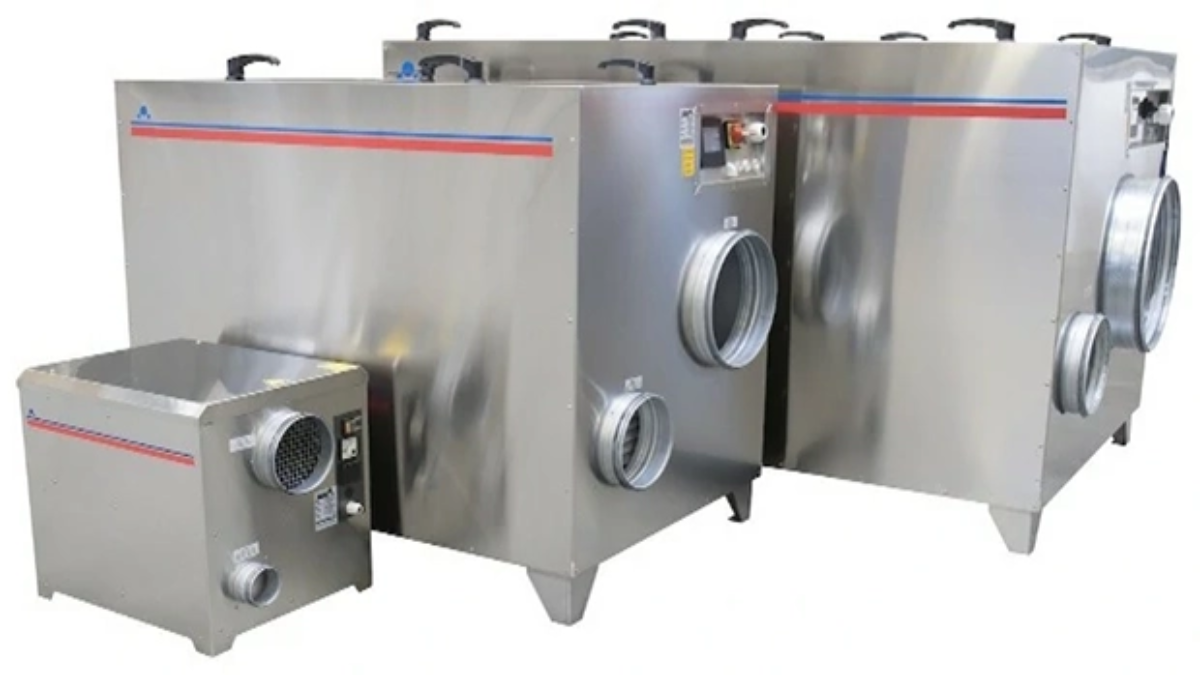
Method of Operation
The dehumidifier operates with two air streams. A larger air stream to be dehumidified, and a smaller air stream to exhaust the moisture out of the desiccant rotor.
Two fans inside the dehumidifier create air streams which travel trough the desiccant rotor in opposite directions.
The larger air volume, the process air, passes through the slowly rotating silica gel rotor. Solica gel is a hygroscopic material adsorbing water vapour direct from the air. When passing through the rotor the humidity of the air is reduced, whilst the moisture content of the rotor material increases. On exiting the rotor the dried air is introduced into the area, or the process to be dehumidified. The adsorption process works in temperatures from -30 ᵒC to + 40 ᵒC.
The smaller air volume, the reactivation air, adsorbs the moisture from the silica gel rotor. This reactivation air is heated by an internal heater to a temperature of approximately +100 ᵒC. As the reactivation air passes through the rotor, in an opposite direction to the dry air, it will decrease the moisture content of the rotor material. The reactivation air will leave the dehumidifier as warm, moist air, which is then exhausted out from the building.

Applications
Dehumidifier DehuTech 450 is of the solid desiccant wheel type designed to dry air of atmospheric pressure. The dehumidifier can be used for drying air of up to 100% relative humidity (RH) with temperatures from -30ᵒC to + 40ᵒC.
The applications are numerous and wide spread below are some examples :
- Controlling humidity levels in production processes.
- Drying of temperature sensitive products.
- Maintaining correct humidity in storage areas.
- Protection of equipment sensitive to corrosion.
- Controlling humidity levels in museums and archives.
- Drying after water damage and drying of buildings during construction.
- Climatic improvements in damp areas.
